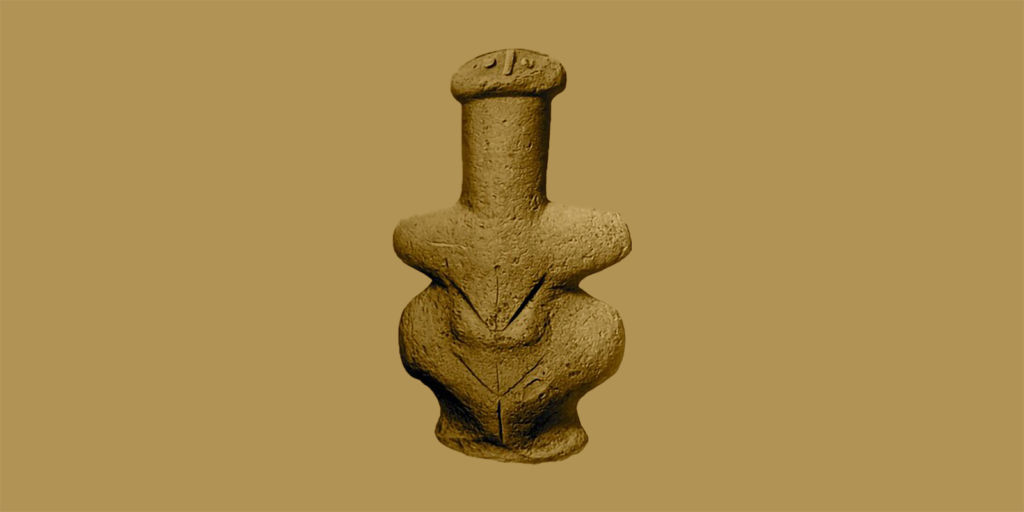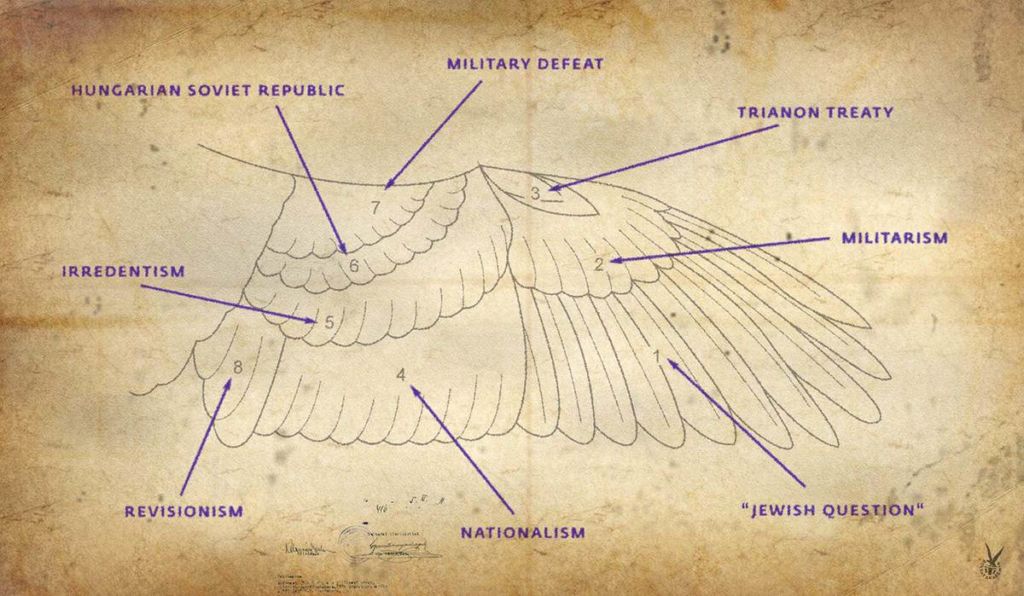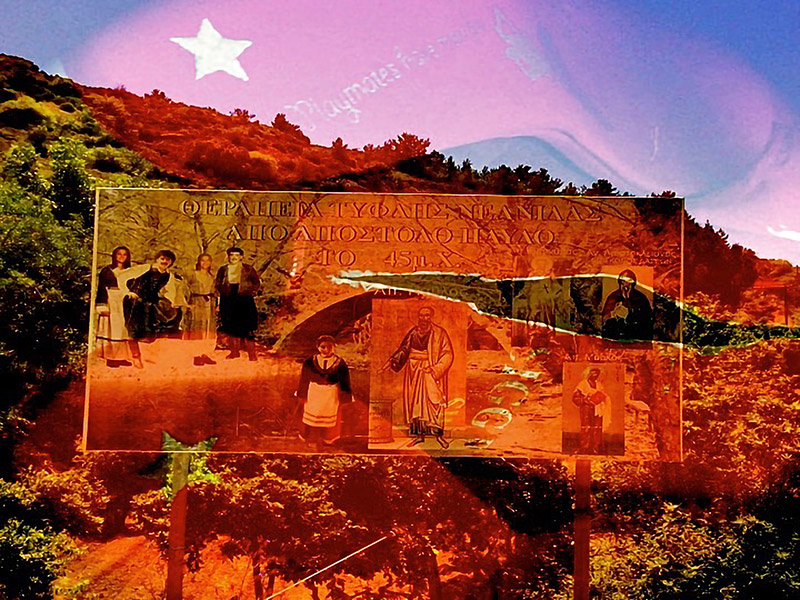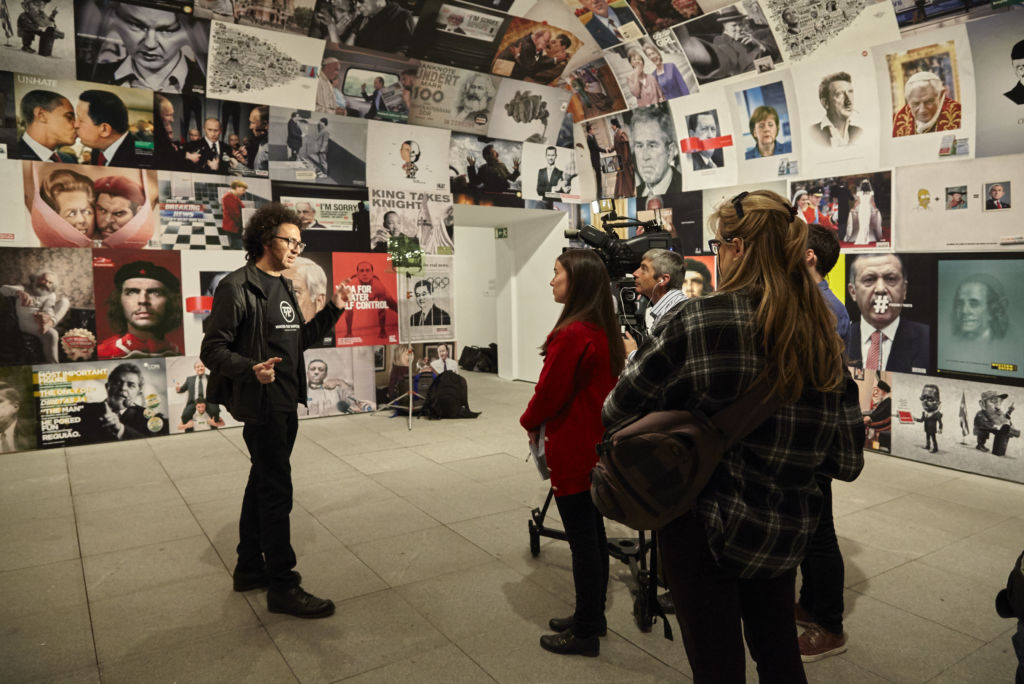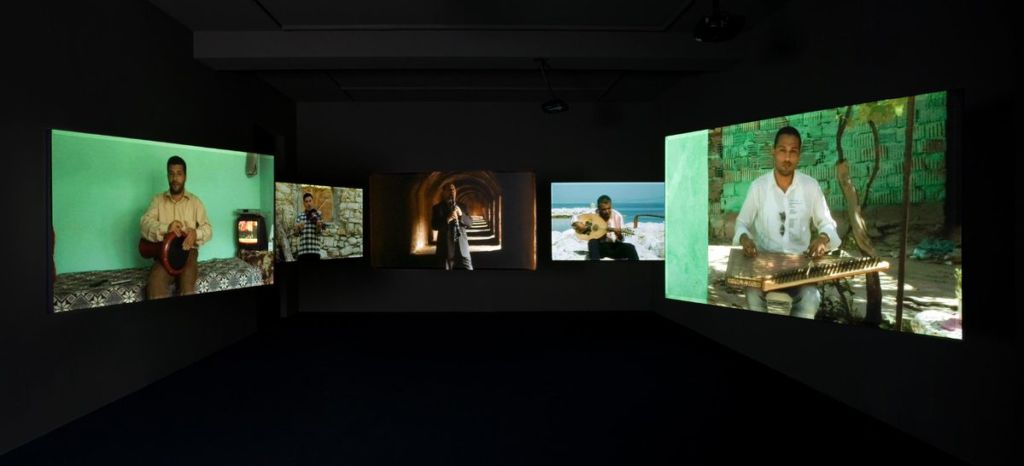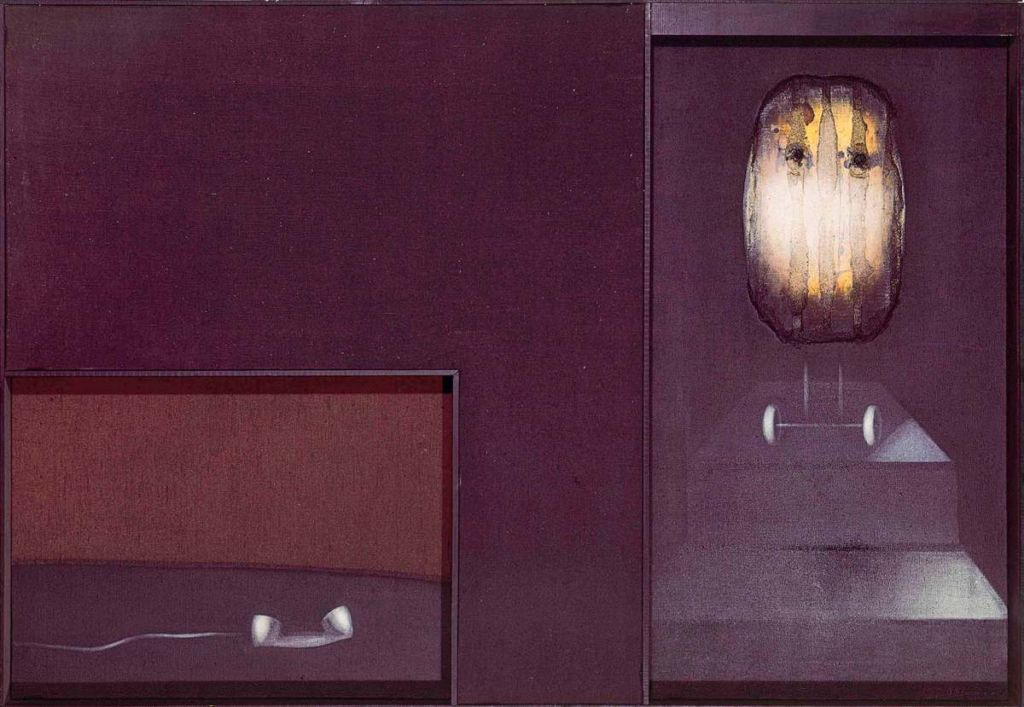Excavating Beyond the Male Gaze on Aphrodite’s Island #2 Deconstructing the Archeology of Aphrodite’s Body
Investigation by Lisa Paul Streitfeld
A 5000-years-old limestone fertility relic of a bi-sex Self-contained inner/outer proactivity statuette ought to be a world famous icon reflecting the global rise of a post-Cartesian transgender movement. Then why was the Lady of Lemba still hidden in shadow in the Cyprus Museum and displayed in such a distracting manner that only the most curious visitor would bother to get down on their knees and read the crude information label?
This archeological discovery—crucial for the 21st century—was excavated in 1976 under a broken storage jar in the entryway of cult sanctuary ruins. The “hiding in plain sight” continues to define the ontology of Cyprus as the site of the sacred marriage of complementary opposites.
In the context of its topography, the timing of the discovery is portentous, if not suspicious—Lemba is just 4 kilometers from the designated birthplace of Aphrodite in Paphos and 20 kilometers north of her sanctuary in Kouklia. One of the oldest villages on Cyprus, it was abandoned by its Turkish-speaking population during inter-communal violence leading up to the 1974 war. It became the official site of the Lemba Archeological Project in 1976. Despite the major find that year, Cypriot archeology was preoccupied with retrieving looted artifacts.1 My own research on the island presented a sobering reality: a tightly controlled field in which hierarchical structures resist cross-disciplinary collaboration even in museum exhibitions.
After discovering Ümit İnatçı,2 a contemporary Cypriot artist breaking through these boundaries to create a holistic language of the hieros gamos unifying Aphrodite’s Island, I began to tackle the Cyprus dispute from the perspective of a new modernism overcoming the binary struggle (objective/nonobjective). Applying Hegel’s dialectic triad3 to my personal archeological project deconstructing Aphrodite’s Body revealed that the Male Gaze Problem is indistinguishable from the Cyprus Problem.
Deconstructing the Male Gaze
“I don’t think you can accuse archeologists of being conspiracists,” Dr. Lindy Crewe, the newly installed director of the Cyprus American Archeological Research Institute (CAARI) tells me over cappuccinos brought by her husband. She leads me into the library and climbs up on a ladder to bring down books about the new dialectic of gender, which was brought into the discourse at the start of the millennium by a fresh crew of female archeologists.
Setting into the library for the night, I began my research with Engendering Aphrodite: Women and Society in Ancient Cyprus, the bound papers delivered at the breakthrough 1998 CAARI conference revolutionizing archeology through a gender perspective.4 With the coming dawn, however, the reductionist approach to the interpretation slammed me into a wall. Where was the evidence of the Lady presented to the world with the grandiosity of her stature? The books selected by the director offered no follow-up to the declaration of the Cypriot Goddess “assimilating the characteristics of Near Eastern counterparts”5 made by co-editor Nancy Serwint. In fact, the closing sentence of this American archeologist’s paper sets the measured tone of inquiry in the field for the coming decades: “The combination of vigorous sexuality, potent fertility, and formidable martial skill resulted in a goddess whose gender was ambiguous, and like her Near Eastern sisters, perhaps it was in that ambiguity where her greatest power resided.”6
Nonetheless, the official language upholding the Hellenic control masked the fact that the focus on the island’s bi-sex relics reflected the influx of women archeologists into Cyprus. What wasn’t incorporated into the reductionist interpretations in the insular field of archeology was the exponential surge of gender academic programs in the wake of Judith Butler’s 1990 breakthrough, Gender Trouble. Practical progress towards an evolutionary gender balance in archeological expeditions only serves to highlight gender confusion when reductionist Cartesian thinking faces the daunting task of interpreting bearded Venuses with penises.7
The reasons for caution is endemic to celebrity culture in academia. While the initial discovery of the “Lemba Lady” was obscured by the after-effects of the 1974 Turkish invasion, the global spotlight shone brightly on Marija Gimbutas.8 The proto-feminist interpretations of Neolithic Bronze Age discoveries, chiefly in Çatalhöyük, Anatolia, crowned the pioneering Lithuanian-American archeologist mother of the 1980s Woman’s Spirituality Movement. The subsequent backlash to Gimbutas’ heroic resurrection of the Great Goddess9 demonstrated the loss of masculine/feminine balance proclaimed in Riane Eisler’s New Age bestseller, The Chalice & the Blade.10
Enosis is the Male Gaze

Canisi Memo, Shaman Poet of North Cyprus, photo © Lisa Streitfeld, 2017
Beneath the persistence of a particular genre, form, discipline, or theoretical activity, one is now trying to detect the incidence of interruptions. (…) they suspend the continuous accumulation of knowledge, interrupt its slow development, and force it to enter a new time, cut it off from empirical origin and its original motivations, cleanse it of its imaginary complicities; they direct historical analysis away from the search for silent beginnings, and the never-ending tracing-back to the original precursors, towards the search for a new type of rationality and its various effects.
Michel Foucault, The Archeology of Knowledge (1969)
At the heart of Cyprus archeology is a couple serving as gatekeepers to the Hellenic perspective intent on keeping the island’s ontology of the hieros gamos, along with the Lady of Lemba, in the shadows. This is where the Male Gaze remains as entrenched as enosis, the policy of unification with Greece that fomented the turmoil resulting in the 1974 Turkish invasion.
A mere glance at Vassos Karageorghis extensive Curriculum Vitae12 is all the researcher needs to know about the intersecting interests of archeology, colonialism and Hellenistic control over Cypriot culture before and after independence. In a full-page listing of honors, not one originated east of Athens. Even in his official retirement, the longtime director of the Cyprus Museum remains a formidable force intent on preempting any Foucauldian effort “to detect the incidence of interruptions,” while his wife papers them over as the sole author of the Kypris narrative. It suffices to say that Jacqueline Karageorghis provides the ancient sources while convoluting the narrative to suit the purposes of the Department of Antiquities, which her husband headed. 13
Enosis, the dominant Hellenic narrative, is reflected in the Judgement of Paris as the cause of the Trojan War. When Aphrodite gives Helen to Paris, a Trojan, as a reward for declaring her the most beautiful of the goddesses, the standard for western beauty is taken East and she must be brought back by a declaration of war. Considering that Troy is modern day Turkey and the Mycenaean immigration to Cyprus followed the Trojan War, we can find this myth as the origin of enosis on the island. Our “Foucault microscope” seeking “a new type of rationality” penetrates into the narrative gaps by way of “tracing back to its original precursors” the Sumerian cuneiform inscriptions excavated on the island and exhibited in the Cyprus Museum. Enosis hides in a language that continually brushes away such monumental findings that do not fit with the dominator narrative. The dead grey zone of the Cypriot tourist map represents a willful repression of the future along with the past. This is not simply a Cypriot matter, but a global concern as the veiling becomes a form of denial reinforcing the one-sidedness of the male gaze.
Reconstructing Adonis
The political tension in the region, as Greek and Turkish ships face off in the Eastern Mediterranean in the summer of 2020, explains why there is no comprehensive reaction, timed to the rise of a global transgender movement, to the matter of Aphrodite’s genders. I departed from my overnight stay at CAARI with the conviction that the shock of these spectacular excavations must be an insider secret—until the players can agree on mutual interpretation. This is impossible, as long as the “one side” edict is enforced as a Medusa shield against penetration to the other side.
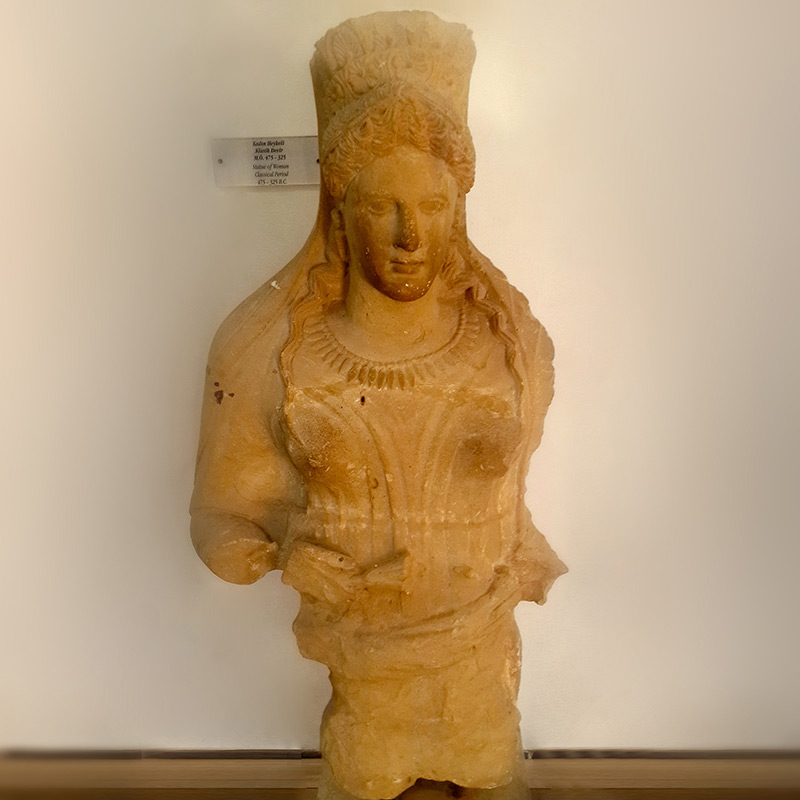
Adorned Venus with Rosettes (Classical Period)
From this 360-degree perspective, it is clear that the Greek mythology of love reinforces this bias by way of punishing “imagined complicities” shattering the binary through the penetrating gaze. Adonis looking upon the naked body of Artemis bathing results in the swift punishment of death. Psyche disobeying the command to never behold the face of Eros results in abandonment as her consort flies back to Olympus.
We could postulate here that the Lady of Lemba remained in shadows until the rise of the Third Sex in a global non-binary transgender movement demanded a holistic language to be attached to the discovery. My fidelity to an event of the Third at the European Graduate School (Saas fee, Switzerland) in 2014 required a word/image vocabulary reflecting a marriage of right and left brain. In looking for ancient relics with sacred marriage iconography around the globe, my eye was trained to the discovery of the “Lemba Lady” offering a new dialectic beyond the male gaze, a body in which the head of the phallus and mind were the one and the same.
Inhabiting his apartment on Uranus beyond time and space, Preciado steals back the thinking phallus for the feminine body, thereby enacting the Cypriot bi-sex icons as a contemporary Adonis cross-gender performance. Strapping on the dildo—symbol of libido—is a literary leap into the magical time of kairos—the architecture of cyclical time defined through the foundation of the Countersexual Manifesto.14 Here we find something new in western philosophy: feminine empowerment derived from a Promethean theft preconceiving the Greek titan tied to the rock at the mercy of vultures. This has a literal origin in the cuneus (vagina) wedge as both instrument and impression of cuneiform writing as well as content: Inanna stealing the me15 from her grandfather, Enki, after a night of drinking and sharing his bed.16
Object transformed into subject is how Preciado’s objectification of libido in the dildo infuses feminist language with lightning rods illuminating a pre-patriarchal history of feminine Self-generated kundalini transformation.17 The countersexual interplay between degendered bodies is the quantum shift in which past and future converge into an empowering present18 signified by Lady of Lemba’s marriage of womb and phallus.
The in-between space of cuneiform is where the passive object of the male gaze is ultimately liberated into proactive subject. Returning to the Cyprus Problem from this place of gender equality through the unity of entanglement, we have to ask: how is this Preciado plunge into the dynamism of the Third Sex possible as long as the current paradigm remains in place?19
Embodiment is the Passage to the Third
“The body—each and every one of our bodies—is the invaluable enclave where transactions of power are ceaselessly carried out. My body = the multitude’s body.”
Paul B. Preciado, Testo Junkie (2008)
The western passage of the Sumerian goddess of the bi-sex was halted in Cyprus by the Greek appropriation of the indigenous goddess Kypris, whose name is derived from the island’s copper wealth. Fortunately, there was another direction for the feminine evolution forestalled in the west by the Greek invention of Aphrodite. The pre-patriarchal goddess migrated East to Iran and then to India. There a technology of Kundalini Yoga would be invented to raise the primordial energy known as Shakti through the spinal chord to the heart, throat, Third Eye, and finally the crown where the sacred marriage takes place with the male spirit (Shiva). This internal process is the embodiment of yoga, which means union, the Hindu practice extending westward in the seventies era of women’s liberation by way of yogis passing through the doors of the counterculture.
The Greek myth of Psyche and Eros reveals Aphrodite’s unwillingness to risk the underworld journey to obtain Shakti’s primordial power for her Self-transformation. After subjecting Psyche to three tasks to prove her worth, she sends her mortal rival on the dangerous mission to retrieve the casket of “beauty” from the Underworld goddess Persephone. When Psyche makes a successful passage and returns to earth with this treasure, she succumbs to the temptation to remove the lid and falls unconscious. Eros discovers her asleep and flies her to Olympus on his wing where they promptly marry, leaving the problem of beauty in the unconscious for another era to resolve.21
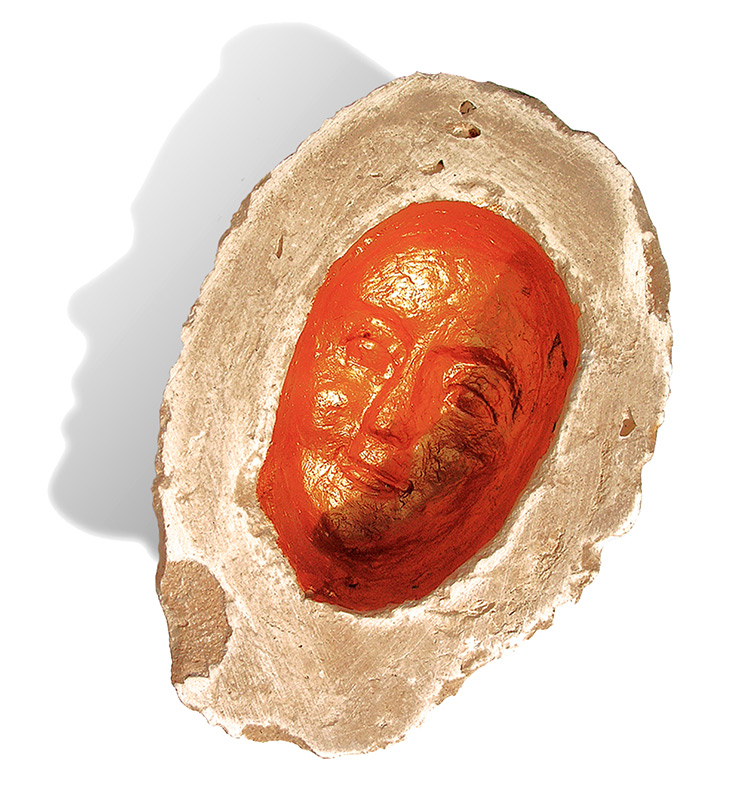
Ümit Inatçi, The Rebirth of Venus: Unidentified Shadow (Found Cypriot Object with digitalized Shadow, 2017)
The timing for resolution is the present. I know this because my body informed me that I was up too high. I had to come down to earth to experience the opposites in my body and understand the journey of embodiment! My gift of Psyche’s underworld treasure at the mouth of Aphrodite’s cave was followed by my fall. I slipped while bathing with the hose in Cyprus House. Throwing my body against the concrete wall, I slid straight down on the sacral dimple at the base of my spine. My kundalini connection ruptured, I couldn’t move my torso. Slowly, with extreme effort, I managed to crawl onto the bed where Canisi Memo, the poet and shaman of North Cyprus, found me. He helped me to an empty apartment above his fish restaurant, where he and his wife took care of me, restoring my health with the savory local cuisine.
Lying inert, listening to the sounds of daily life in the neighborhood of concrete houses and small farms, I faced the prospect of permanent damage to inner and outer movement. Finally, my body understood, through absence, the inner tension of the opposites as the origin of feminine proactivity removed from the male gaze. Preciado’s proclamation of his/her body as the bi-sex crossing “of the multitude’s body” was revealed by the 360 degree outside/insider perspective of a Cypriot holistic body afforded by my visit to Ümit İnatçı’s Famagusta art studio.
Full Circle to the Hieros Gamos: Ümit İnatçı
“I make art like a shaman who tries to return to the cosmic unity of the nature. Primitiveness and geometry, intuition and consciousness, subject and object, mystery and clarity, part and whole, suspicion and absolute.”
Ümit İnatçı
What can we conclude from the global rise of the artist-shaman who has created his own visual vocabulary of the hieros gamos? Ümit İnatçı claims his language as decipherable,24 thereby challenging the Greek dominator language which quantifies archeological artifacts discovered in his homeland.
Born in 1960, the year of Cyprus’s independence from a long lineage of foreign rulers, and coming of age during the upheaval of the 1974 Turkish invasion, Inatçı’s formation as an artist is inseparable from his nation forging its own independent path between the binary opposites characterizing the Kissinger realpolitik Cold War mentality splitting Cyprus in two.25
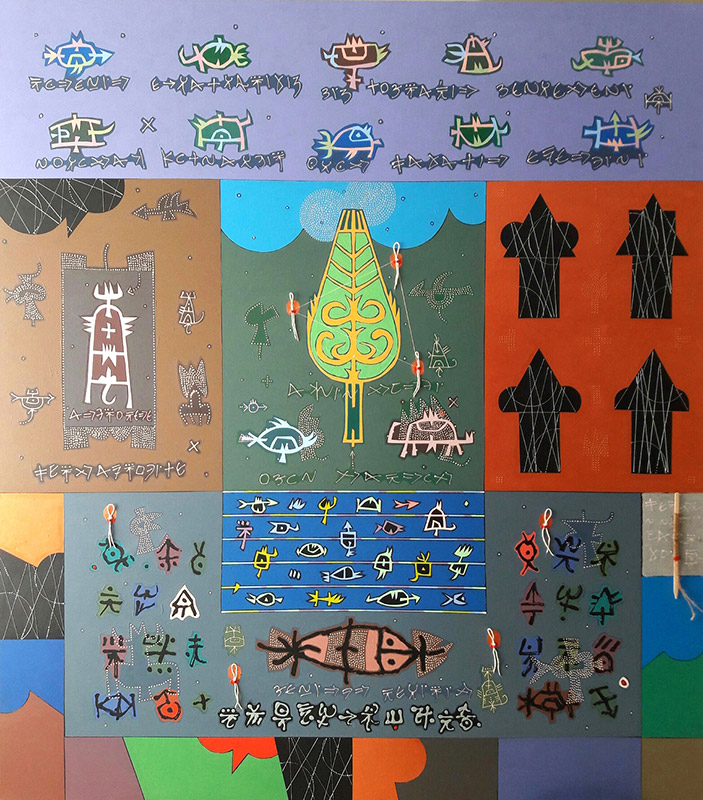
Ümit Inatçi, Hermaphroditus, 2019, 160 x180 Cm
As a boundary-smashing artist from Limassol in the south, İnatçı switched his base across and between geographical borders to create a Möbius strip aesthetic—a holistic art grounded in the archeology of a unified Cyprus. The hidden treasures of the axis mundi are deciphered through his visual vocabulary of the lost language and religion, thereby challenging rigid hierarchical structures confronted with revolutionary impulses for change. “I am only working with the hieros gamos—the hermaphrodite—now,” he replied when I sent him the title for this article.
Epilogue
The sacred reality of my two artistic discoveries of the hieros gamos ontology of Cyprus separated by 5000 years began to sink into the designated third space for a Cypriot union—the roof of the Home of Cooperation inside the Nicosia Buffer Zone. As I was looking towards the haystacks where I stashed my backpack, a young Greek Cypriot confided her disappointment in finding not one Turkish Cypriot at a concert billed as a reconciliation offering during a summer of border demonstrations and tense political negotiations. I could see her desire for an authentic experience in her eyes and this unleashed a river of sorrow damned up inside me.
I told her of my experience of Canisi Memo guiding me to the white genocide memorials and inside the recreated schoolroom marked with the names of children whose bodies were thrown into a mass grave memorialized by a devastating bronze sculpture. We both turned away from it, the stench of death lingering in the air and the quotes from the book purchased in the schoolhouse resounding in my head: “All of the world we know this genocide. Rest in peace my Martyr and live in the silent memories.”26
My companion was genuinely surprised to hear my tale, revealing the innocence of new generations in the south that presume they stand on the side of righteousness because they are told only of the brutality of the Turkish invasion while forbidden from probing the reasoning behind it. The invading army was protecting the indigenous Turkish speaking Cypriots from the enosis campaign of Archbishop Markarios, the first president after independence known for his declaration: “If Turkey comes to save Cyprus Turks, it will not find any Turk to save.”27

Lisa Streitfeld, Embodiment Performance with Canisi Memo in Ruins of a Maras Church under a Solar Eclipse (17 August 2017), performance stills
On the roof of the Home of Cooperation overlooking my refuge in the haystacks, where the tension of opposites was transmitted into the bliss of surrendering to uncertainty, the message from the dead to the living transmitted by crows which were cawing in their primordial blackness to the dawn of my adventure was suddenly apparent. I had an Aha Moment of past/present/future convergence into the 360-degree perspective of Foucault’s new type of rationality and its various effects like no other on my journey: the reason for the Aphrodite cover-up is the same as the need for ethnic cleansing—to rid the Island from all traces of an earlier Self-contained, Self-empowered Goddess worshipped at the dawn of human civilization. This Love Goddess balancing the opposites with her magnetic force of attraction, fluidly passing through the cycle of light to darkness as a signal of change on the horizon while transiting through the lunar gates of her perfectly symmetrical eight-year cycle switching from Morning to Evening Star by way of interior/exterior conjunctions with the Sun!
The moment has come for the axis mundi to fill the void left by the male gaze enforcing enosis at the expense of feminine dynamism as a holistic human value. The continued struggle for union of the opposites in Aphrodite’s split body signifies a détente in academic tensions bursting the confinement of their disciplines. The very same artifacts revealing Cyprus as the center of trade resolve the conflict between the Cartesian opposites: subject/object as well as logical/metaphorical. Moreover, Cyprus as axis mundi resolves the conflict between the opposing European/Aryan and Afro-Egyptian perspectives regarding the origin of Greek culture.28
The relic of the past discloses the future art of the hieros gamos as a present reality. As demonstrated here, the contemporary artist quest is for the physical embodiment of the Third Sex as tantric fluidity of phallus and vulva.29 This is the Cypriot right/left brain marriage of word/image offered in the Ümit İnatçı oeuvre, a holistic ontology healing the political, economic and geographical divide.
The singular icon of a fluid engendered reality objectifies the conversion out of the binary into the holism defining a new 21st century modernism. The Uranian invoked through this quest30 for liberation happens to be the icon of a rising age, the Age of Aquarius.31 Only when she enters the global spotlight in all of her bi-sex Self-contained magnetic beauty will humanity proactively embody her post-gendered cosmic vibration. This is where the Möbius strip of inner/outer becomes the symbol of human rebirth into an interconnected dynamic of interactive holism with the only home we have to share: planet earth.
I am very grateful for the heroic editing of Vincent Simon and the great care of his collaborative interactive approach, along with that of Mathilde Roman and the Switch (On Paper) co-founders: Luc Clément and Éric Mangion. The rigors of this cross-disciplinary publishing initiative took place during a nine-month gestation covering the period of the Covid quarantine. I sincerely believe that this investigation would not have been published in the holistic form required by its content without their enthusiasm.
Cover: Lady of Lemba, Chalcolithic Age, ca. 3 000 BC
1.The artifacts in the northern territory controlled by the Turks are considered “looted” in the south, where archeology is tightly controlled by the Hellenic Cyprus Department of Antiquities.
2.The multimedia boundary-smashing art practice of Cypriot Ümit İnatçı innovates the marriage of word and image, reflecting the right/left brain integration of his multilingual upbringing. Born in Limassol in 1960, the year of Cyprus independence, he learned to communicate in three languages; Turkish, Greek and English, within his Turkish-speaking family. İnatçı is a prolific painter, poet, writer, photographer, designer, filmmaker, art critic, curator and author of 35 books on literature and politics. Before leaving academia in 2018, he was a full-time educator, holding the positions of Dean of Faculty and Founder Rector. He is a member (former chair) of Administration Council of Cyprus Artist & Writer Union and Chief Editor of the Art & Literature Magazine İnsan Zaman Mekan.
3.(A) thesis/New Modernism vs. (B) anti-thesis/Enosis = (C) synthesis/Hieros Gamos.
4.The Lady of Lemba is only mentioned three times (186, 315, 367) in the 26 published texts, and not included in the list of 75 figures discussed. Diane Bolger and Nancy Serwint, Engendering Aphrodite: Women and Society in Ancient Cyprus (Boston: American Schools of Oriental Research Archeological Reports, Vol. 7, 2002).
5.Nancy Serwint, “Aphrodite and her Near Eastern Sisters: Spheres of Influence,” in Engendering Aphrodite, 361.
6.Ibid., 344.
7.See a list of references in the Appendix of Bonnie Maclachlan’s “The Ungendering of Aphrodite,” in Engendering Aphrodite, 375.
8.Marija Gimbutus
9.“In academic circles the concept of the Great Goddess has fallen from grace during the last two decades, and scholars engaged in research on figurines no longer regard them as vestiges of an early religions (Conkey 1997; Meskell 1995; Rice 1981; Russell 1998)” quoted in Diane Bolger, Gender in Ancient Cyprus: Narratives of Social Change on a Mediterranean Island (Lanham, MD: Altamira Press, 2003), 96.
10.Riane Eisler, The Chalice and the Blade: Our History, our Future (San Francisco, CA: HarperOne, 1988).
11.Michel Foucault, The Archeology of Knowledge (1969) (New York: Pantheon Books, 1972), 4.
12.A huge gap in the official record underscores both the hegemony of this individual and the strict top down control of Cyprus archeology. Dr. Karageorghis’ CV lists him as Director of Antiquities (1963-1989) with previous appointments as Cyprus Museum Assistant Curator (1952-1960) and Curator (1960-1963). There is no listing of Dr. Karageorghis as Director of the Cyprus Museum, but rather as Director of Anastasios G. Leventis Foundation (1989-2010) which funds museum publications with the Karageorghis imprint, as either editor or author, listed on his CV
13.The Department of Antiquities, which administers the Cyprus Museum and controls the dissemination of its treasures through exhibitions, seminars, conferences, publications, etc., reveals the gaping “interruption” in the official record obscuring the hegemonic Hellenic control in the following manner: 1) excluding dates of its directors listed after 1991; 2) leaving out entirely the role of museum director, known to have been Karageorghis for a long period; 3) issuing annual reports in which museum staff titles are not listed and museum expenses (such as salaries, exhibitions, restoration and the library) are integrated into overall accounting for the Department of Antiquities. The annual reports online (2006-2009)
14.First book by philosopher Paul B. (then Beatriz) Preciado, originally published in French in 2000. Countersexual Manifesto, Trans. Jack Halberstam, Forward, Kevin Gerry Dunn (New York: Columbia University Press, 2018).
15.In Sumerian mythology, a me is one of the decrees of the gods that is fundamental to human civilization.
16.Samuel Noah Kramer, Sumerian Mythology: A Study of Spiritual and Literary Achievement in the Third Millennium B.C. (Philadelphia: University of Pennsylvania Press, 1961, revised edition), 64-68.
17.This image brings to mind the double serpent wielding Minoan goddesses of Crete connected to Astarte, worshiped in the ancient Levant among the Canaanites and Phoenicians.
18.In the quantum world, the Third is the passage beyond the binary divisions (past vs. future) into the unity of time in the ever-present NOW. See Lisa Streitfeld, Hermeneutics of New Modernism (Dresden, Germany; New York, USA: Atropos, 2014), 171.
19.Of the five archeologists contacted, only one agreed to be interviewed but declined to discuss the hieros gamos, while another sent a curt reply denying the hieros gamos ever existed in Cyprus. The museum did not acknowledge my repeated request for images. A decade after Engendering Aphrodite, there is no mention of the Lady of Lemba in Diane Bolger’s anthology, A Companion to Gender Prehistory (Oxford: John Wiley & Sons, Inc, 2013). In the introduction, however, she poses a crucial passage out of the binary with her subheads: “Gender and feminism: Another binary division?” (7) followed by “Intersectional analysis: A ‘third way’ for gender prehistory?” (10).
Paul B. Preciado, Testo Junkie: Sex, Drugs, and Biopolitics in the Pharmacopornographic Era (2008), Trans. Bruce Benderson (New York: Feminist Press, 2013), 114.
21.See Marie-Louise von Franz, The Golden Ass of Apuleius: The Liberation of the Feminine in Man (Boulder: Shambhala, First Edition, 2017), 174. “From the human standpoint, Olympus means the unconscious. Thus the whole play of fate disappears. There is a solution, but it disappears; it is in the unconscious and not integrated in the human realm. It remains suspended as an open problem.”
22.Marrying Turkish and Greek, this title to my catalog essay, written in the spring of 2017, became that of the artist’s 2018 retrospective. Gamos Döngüsü was on view at Milli Reasurans Sanat Galerisi from Jan. 10 to Feb. 24, 2018.
23.Ümit İnatçı statement excerpted on the Milli Reasurans Sanat Galerisi website
24.The Cypriot syballic language had 1300 years of usage, from 1600 until the Hellenic absorption in 31 BC. It was never deciphered.
25.“Interview with Henry Kissinger,” Brendan O’Malley and Ian Craig, The Cyprus Conspiracy: America, Espionage and the Turkish Invasion (London, UK; New York, USA: I.B. Tauris Publishers), 237-242.
26.Taali Ajans ve Matbaacili, Step by Step Genocide (Nicosia: Yenisehi, Second Edition, 2015), 165.
27.Ibid., 174.
28.“Hellenism, once a relatively solid, relatively uncontroversial academic subject concerned with Ancient Greek culture, found itself a battleground for culture warriors upon the publication of Martin Bernal’s Black Athena in 1987,” wrote Efterpi Mitsia and Amy Muse, authors of Hellenism Unbound “Introduction: The Difficulty of Unbinding Hellenism” (Synthesis 5, Fall 2013, downloaded from Academia.com on August 1, 2020).
29.In tantric sex, the phallus merging into the vulva is liquified by the kundalini energy. This state of energetic merging is reflected in the Lady of Lemba’s bi-sex unity.
30.This border-smashing feminine archetype manifested as Antigone, a stunning Cypriot archeology student. We met on my last night in the island, at the close of the 2017 Fringe Festival collapsing the internal borders of Nicosia. Antigone confirmed everything I discovered about the strict Hellenic control of Cypriot archeology obstructing the interpretation of the unique bi-sex Cypriot artifacts. We agreed that the art world would be the best manner of relaying the news of what was being repressed.
31.From the opposing perspectives of Greece’s cultural origin, Jorjani (Euro-Aryan) and Bernal (Afro-Egyptian) are the rare academic scholars interpreting the extreme cultural shifts reflecting the changing of the astrological ages due to the precession of the equinoxes. Bernal writes: “(…) the Messianism between 50 BC and 150 AD, and the idea that a new age was dawning, were not restricted to Jews, nor can they be completely explained in terms of the Roman political changes mentioned above. Another element was the astrological change from the age of Aries to that of Pisces. Without getting into the argument over when and by whom the precession of the equinoxes was discovered, there is no disagreement that it was widely known by 50 BC. The significance in this context is that over the period between 50 BC and 150 AD the spring equinox shifted from Aries to Pisces” (Bernal, 1987:125-126). There is no agreement between Sidereal (Eastern) and Tropical (Western) astrologers on the timing of the shift to the Age of Aquarius. However, there is a consensus on the importance of the December 21, 2020 Great Conjunction of Jupiter and Saturn at the Aries Point (zero degree) of Aquarius coinciding with the December 25 birth of Jesus, the icon for the Age of Pisces. The Star of Bethlehem followed by the Magi (who were very good astrologers) to the birth of Jesus is now interpreted as the 7-6 BC triple conjunction of Jupiter and Saturn in the sign of Pisces. See Michael R. Molnar, The Legacy of the Magi, (Brunswick/Rutgers University Press, 2000). See this link for an astrological interpretation of the 2020 Great Conjunction shift from the Pisces to Aquarius icon:
